Summer in Japan: 20 Fun Things to Do to Beat the Heat

Japan's summer is hot but lively, with festivals, fireworks, hiking, and swimming. Discover 20 activities to enjoy the sunny season to the fullest!
20 Ways to Experience Summer In Japan

Japan's summers are known by many for blistering temperatures and high humidity, but this season is also full of activity and events, from colorful fireworks to gorgeous nature and lively traditional festivals. With so much variety, there is something all can enjoy even despite the hot weather.
This article introduces 20 things to do during the summer in Japan, ranging from cool outdoor spots to special events and festivals. Continue reading to find the ideal activity for you and make the best of the sunny, warm weather.
Summer Things to Do
Stay Cool Outdoors
1. Climb Mt. Fuji
2. Have a Beach Day
3. Hike the Japanese Alps
4. See Hokkaido's Flower Fields
5. Spend the Weekend Camping
6. Go Firefly Watching
7. Hold a Barbecue
Traditional Festivals and Events
8. See Larger-than-Life Floats at Nebuta Matsuri
9. Attend the Grand Sumo Tournament in Nagoya
10. Make a Wish during Tanabata
11. Go to a Fireworks Festival
12. Jam at Fuji Rock and Music Festivals
13. Pray for Harmony at Hiroshima Peace Memorial Park
Indoor Activities
14. Stay Cool and Cultured at a Museum
15. Explore Underground Shopping Malls
16. Swim at Yunessun, Hakone's Hot Spring Theme Park
Seasonal Eats
17. Try to Catch Nagashi Somen
18. Snack on Kakigori Shave Ice
19. Head to a Beer Garden
20. Eat by the River in Kyoto, Kawadoko-style
Taste the Best of Japanese Cuisine
1. Climb Mt. Fuji

The season to climb Mt. Fuji is in the summer, due to the frigid temperatures on the iconic mountain's summit. The climbing season starts on July 1 and ends around September 10.
Climbing the Yoshida Trail on Mount Fuji requires a reservation through the official Mount Fuji climbing website (available in Japanese, English, traditional Chinese, and simplified Chinese).
As the highest mountain in Japan, climbing the peak takes a couple of days and requires advanced preparation. Be sure to research on the mountain before you go. Visitors can choose different routes. The most popular is the Yoshida Trail, followed by the Fujinomiya Trail. Others include the Subashiri Trail and Gotemba Trail, which have comparatively fewer hikers.
Travelers with time and endurance are encouraged to challenge themselves with an unforgettable Mt. Fuji climb.
2. Have a Beach Day

Beaches can offer just the right relief from the heat on a summer's day. Be sure to bring a swimsuit and beach-appropriate gear with you if you want to experience the ocean waters.
The official season for swimming at beaches varies across the country. Japan is filled with beaches. There are several beaches in the greater Tokyo area, including Yuigahama Beach and Zushi Beach in Kanagawa Prefecture. Near Osaka and Kyoto are a number of beaches, too.
For those drawn to the sea, Okinawa Prefecture is famous for its many beaches with white-colored sand and blue waters, and you can also enjoy snorkeling and diving.
Read also
3. Hike the Japanese Alps

Hiking at the high-altitude Japanese Alps in Nagano, Gifu, and Toyama prefectures is an ideal summer activity for nature lovers. The climate is comfortable, and the large-scale mountains here are a must-see. The elevation of these areas keeps the climate cool, even in summer.
Kamikochi in Matsumoto, Nagano, is a mountain resort area where travelers can enjoy light hiking. Another popular area is Hakuba, which has numerous trails and areas to enjoy nature.
Tucked in the Japanese Alps, World Heritage-designated Takayama with its traditional townscape, shops, and restaurants, is also a recommended destination. It is close to many trails and makes an ideal base for a trip to the mountains in the area.
Read also
4. See Hokkaido's Flower Fields
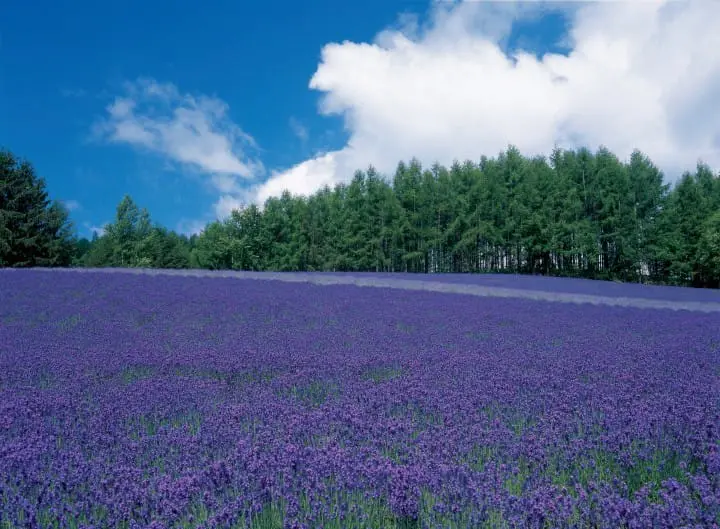
Hokkaido, Japan's northernmost prefecture, is known for its cool temperature. It is also the largest prefecture in Japan while being one of the least-developed, which makes the outdoors here feel boundless compared to other areas.
A must-see are the colorful flower fields in Furano-Biei in central Hokkaido, and Asahikawa to the north. Farm Tomita in the town of Biei stuns visitors every year with its lavender fields that transform the area in a delicate purple in early to mid-July. For more flowers, visit Asahikawa, which has the fantastical gardens of Ueno Farm, to add a colorful, fantasy-like touch to your trip.
Enjoy Hokkaido's famous spots in a day tour!
Read also
5. Spend the Weekend Camping
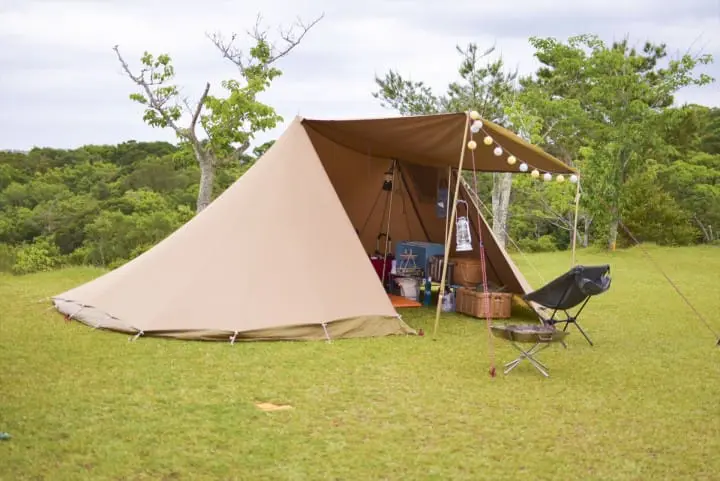
With warm weather in Japan, camping outdoors is a must-try activity for those wanting to get in touch with nature and away from crowds. Campsites are everywhere in Japan, from nearby Mt. Fuji to the Japanese Alps.
Visitors can also consider staying at one of Japan's thirty-four national parks. Please see the official website for more details on campgrounds and reservations.
Campsites in Japan range from spots where you simply pitch your tent, to cabins to glamping. There is sure to be something to suit everyone's desired balance of adventure and comfort.
Please note that some camping sites require reservations in advance, and can become fully booked during summer months. Be sure to plan ahead.
Read also
6. Go Firefly Watching
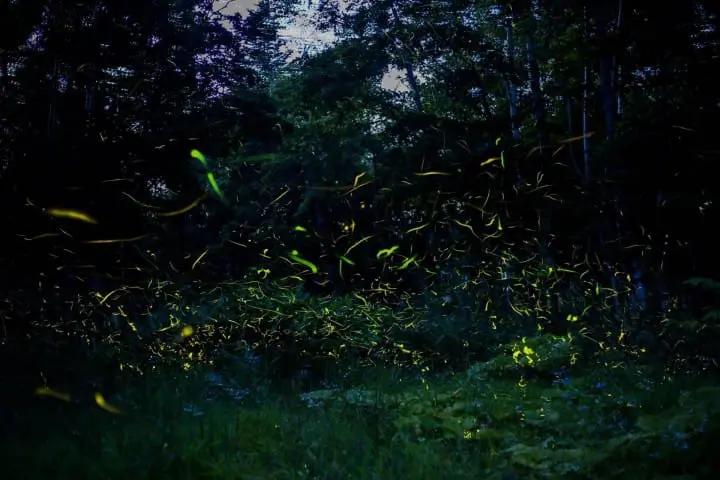
Fireflies can be observed during summer nights in Japan from June through August, depending on the region. Rural areas tend to offer more chances to see these gorgeous creatures.
In Tokyo, fireflies can be seen at Hotel Chinzanso Tokyo in Bunkyo Ward. The glow from the fireflies against the cityscape is truly stunning.
The fireflies can also be appreciated in Kyoto. Head to the rural Ohara area, which is known in particular for its beautiful fireflies lighting up the night sky.
7. Hold a Barbecue
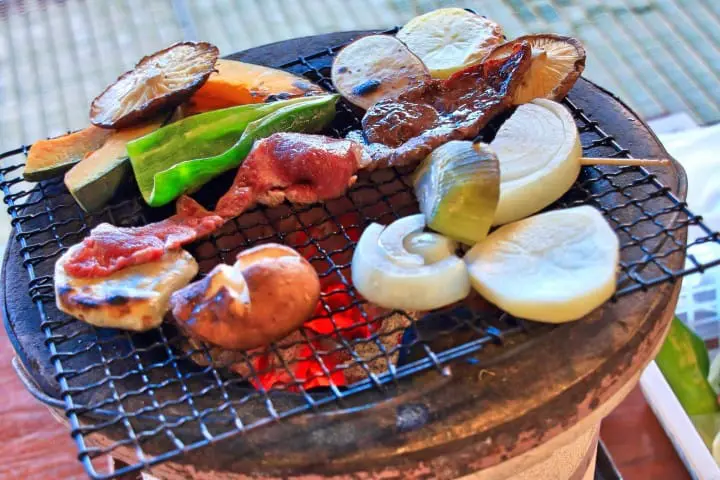
Barbecues are a classic past time during summer in Japan for socializing with family and friends. You can take part in this custom too with some ingredients and planning.
Many parks and campsites will have barbecue areas which you can rent out or use. Traditional ingredients in a Japanese barbecue can include some type of meat or fish, and summer seasonal vegetables like Japanese pumpkin and eggplant. Onigiri (rice balls) and yakisoba (stir-fried noodles) are also often part of the menu. It is a fun, healthy way to take in the season with something delicious.
8. See Larger-than-Life Floats at Nebuta Matsuri

The Nebuta Matsuri in Aomori Prefecture is an internationally-renowned festival held annually in between August 2 and August 7. The colorful, illuminated floats made by artisans captivate many viewers. The festival's main events include a parade and traditional dances, as well as a magnificent firework performance.
The Tohoku region, which Aomori is part of, is known for its other major summer festivals, too. The Tanabata Festival in Sendai and Kanto Festival in Akita Prefecture are particularly famous and accessible from Aomori.
Read also
9. Watch the Grand Sumo Tournament
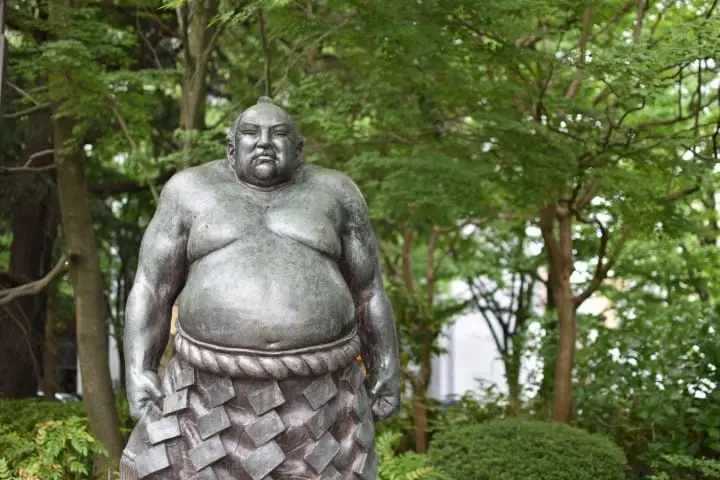
Sumo is a great way to get experience traditional martial arts in Japan. The Grand Sumo Tournament held annually in July is a major series of matches where the most talented wrestlers compete in Japan.
Visitors wanting to experience the excitement and skill of the athletes shouldn't miss a chance to see this high-level tournament at the venue, on television, or online.
10. Make a Wish During Tanabata
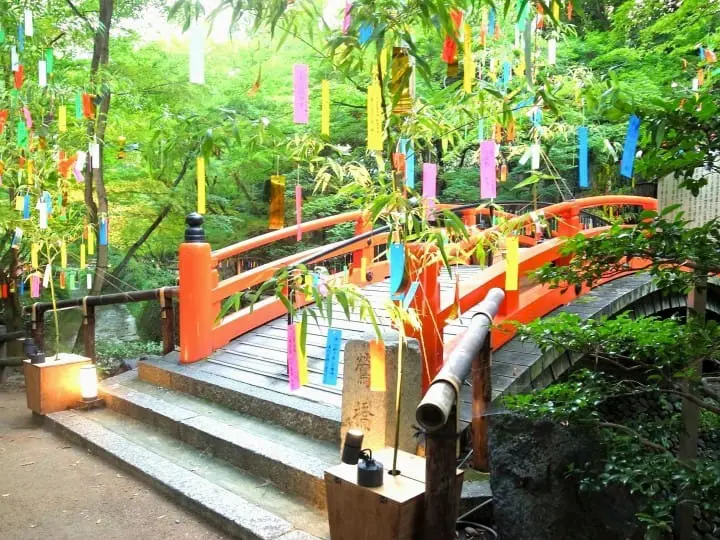
Tanabata is a traditional custom, dating back to the Nara Period, that happens annually on July 7 or August 7, depending on the region. Its origins are from a Chinese story about two deities in love but unable to meet. In Japan, it is customary for people to write wishes papers on colorful papers called tanzaku.
Tanabata occurs throughout Japan, so look for the colorful streamers where you are and participate in this custom yourself.
11. Go to a Fireworks Festival
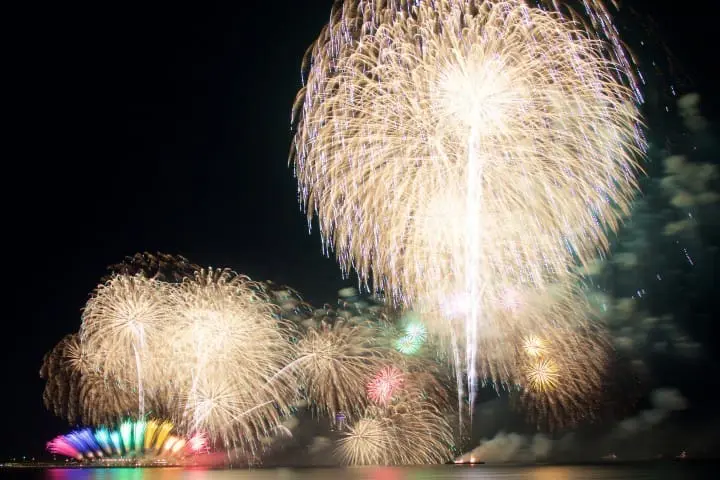
Fireworks festivals are held all over Japan in the summer months. The brilliantly colored displays light up the summer night sky for a magical, one-of-a-kind experience.
One of the most famous festivals is the Sumida River Fireworks Festival, located by Tokyo Skytree and Asakusa. In Osaka, the Tenjin Matsuri, a grand summer festival centered around Tenmangu Shrine, has a stunning fireworks display and is also a must-see.
Many attendants at fireworks festival will be wearing yukata, a summer kimono. This is an excellent time to rent or borrow a yukata yourself and take in the traditional, festive atmosphere.
Read also
12. Jam at Fuji Rock and Music Festivals

Summer brings internationally-famous bands and musicians to Japan. Fuji Rock Festival (end of July) in Niigata and Summer Sonic (mid-August) in Tokyo and Osaka are just a couple of large, multi-day festivals. Artists from overseas as well as Japanese groups perform at these events.
Rock in Japan Festival, held at Hitachi Seaside Park for ten days in August, features mainly domestic artists and is ideal if you are a fan of Japanese rock or pop.
One thing to note is that even though these festivals are very popular, first-time visitors may be surprised by the orderliness and calmness of the crowds. Your music festival experience will be one-of-a-kind.
13. Pray for Harmony at the Hiroshima Peace Memorial Park
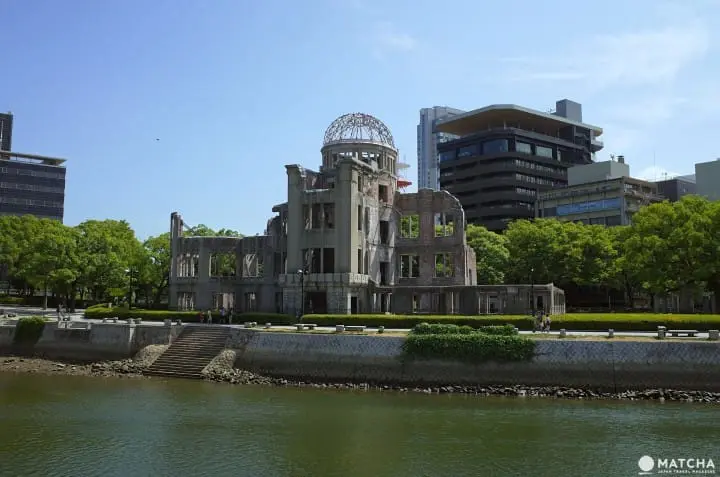
Every year on August 6, the Peace Memorial Park in Hiroshima holds ceremonies and a lantern floating event in remembrance of the victims and lasting damage from the atomic bomb dropped in 1945.
The ceremonies include speeches from government officials from around the world and a participatory activity where attendees can make and float down a paper lantern down the Motoyasu River, next to Hiroshima's A-Bomb Dome. This peace-centered event provides an uplifting, forward-thinking perspective on the events in 1945.
14. Stay Cool and Cultured at a Museum
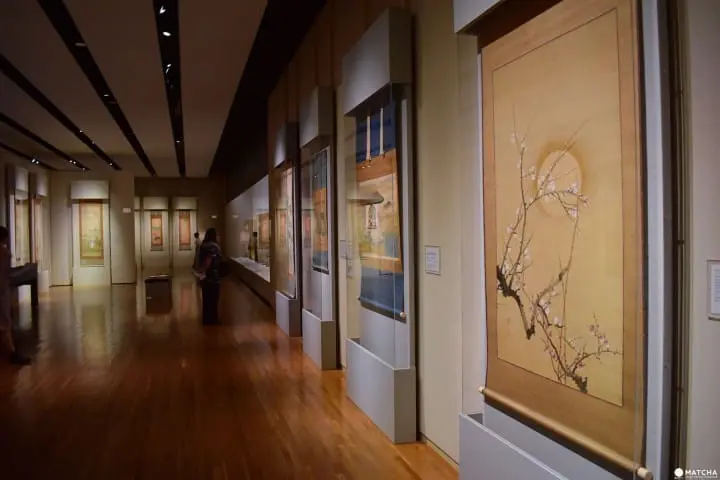
Picture from Yamatane Museum of Art - A Refined Japanese Art Experience In The Heart Of Tokyo
A great way to avoid the heat and to learn something new is to head indoors to a museum. While enjoying the cool air-conditioned interior, visitors can see everything from Japanese art to historical artifacts, to the history of ramen.
Tokyo's Ueno Park has six museums with different types of exhibits, from sculptures to the city's history. teamLab Borderless and Planets, filled with light and sound, are experiential, unique art exhibitions worth seeing, too.
Kyoto also has a large number of museums, like the Kyoto Railway Museum and a museum on traditional Japanese desserts.
Read also
15. Explore Underground Shopping Malls

Picture courtesy of PIXTA
Another cool option is to browse underground shopping malls found throughout Japan. Usually connected to train stations, underground shopping areas are filled with stores, restaurants, and cafes, providing air conditioned-relief and entertainment to those passing by. In addition, summer sales are common in Japan, making this an ideal time for finding bargains.
You can find these areas in most major train stations in Japan. Tokyo Station contains long shopping streets and a street filled with ramen shops. Osaka's Umeda Station and Namba Station also have hundreds of stores underground, connected to stations. Even Kyoto Station has large shopping malls on the basement levels.
Please note that these areas can become crowded, especially on weekends, but provide shoppers with a chance to find interesting gifts and relax in comfort.
Read also
16. Swim at Yunessun, Hakone's Hot Spring Theme Park
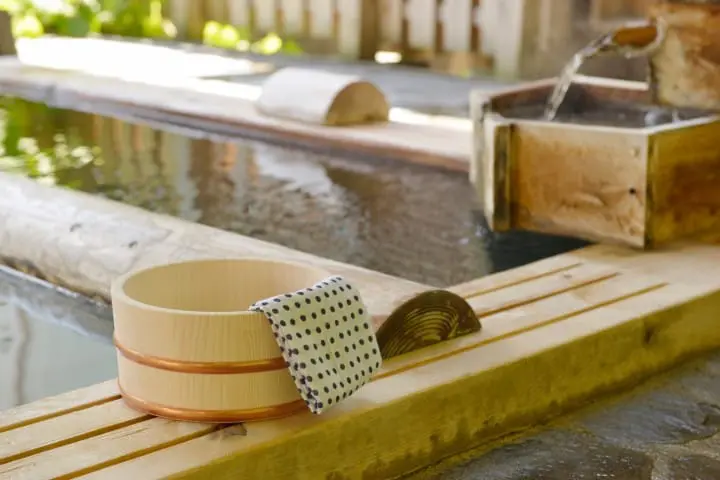
Onsen are popular year-round in Japan, but bathers who want to try relaxing in cooler waters can head to Yunessun, a theme park of hot springs and baths in the gorgeous Hakone area near Mt. Fuji. There is a large swimsuit area at this facility filled with different types of pools, from wine-tinted water to coffee baths, and a large-scale swimming pool in the center.
It is an ideal place to cool down and spend time with family and friends. There is also an outdoor water park great for summertime play.
Hakone is within convenient access from Tokyo. Take the Odakyu Romancecar from Shinjuku Station to get there in around an hour and a half.
17. Try to Catch Nagashi Somen
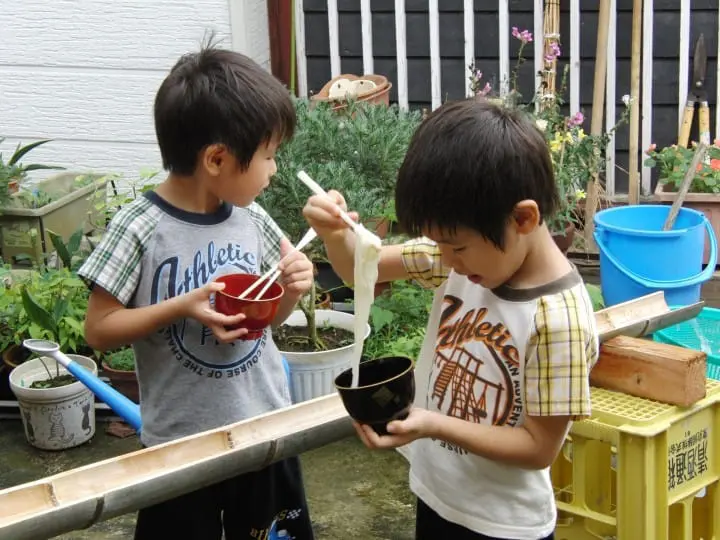
Nagashi somen is a delicious summer dish involving catching and eating chilled, thin, wheat somen noodles. Traditionally, somen noodles are slid down a hollowed-out bamboo shoot with flowing water. The diner's job is to catch the noodles with their chopsticks, dip it in a bowl of broth, and eat. It is a delicious and fun activity done in Japanese households.
You can also find similar types of restaurants with different forms of nagashi somen, including noodles rotating around in a large dish.
Read also
18. Snack on Kakigori Shave Ice
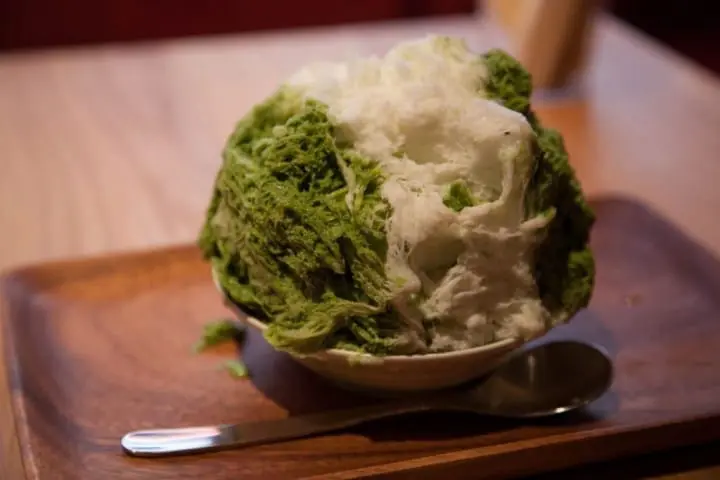
Kakigori, or Japanese shave ice, is a classic summer treat that all visitors should try at least once. There is something to please all tastebuds and dietary preferences, from the fluffy ice served at festivals, simply flavored with syrup, to decadent puffs of ice, topped with condensed milk and fresh fruit, found at traditional Japanese cafes and dessert shops.
Common flavors in Japan include strawberry and fruit of all types, matcha, and kinako (soybean flour). Satisfy your sweet tooth and cool down with delicious kakigori on a hot day.
Read also
19. Head to a Beer Garden

Between June and September each year, beer gardens are popular throughout Japan. Beer gardens are held in the evenings on weekdays and on weekends, offering refreshing all-you-can-drink beverages, including beer, cocktails, and non-alcoholic beverages, along with food. In most cases, customers fill the drinks themselves with machines or go up to beverage stands and order.
It is an entertaining and cool way to spend warm summer nights. Beer gardens are held in most major cities in Japan, so it is easy to find one close to your destination.
20. Eat by the River in Kyoto, Kawadoko-style
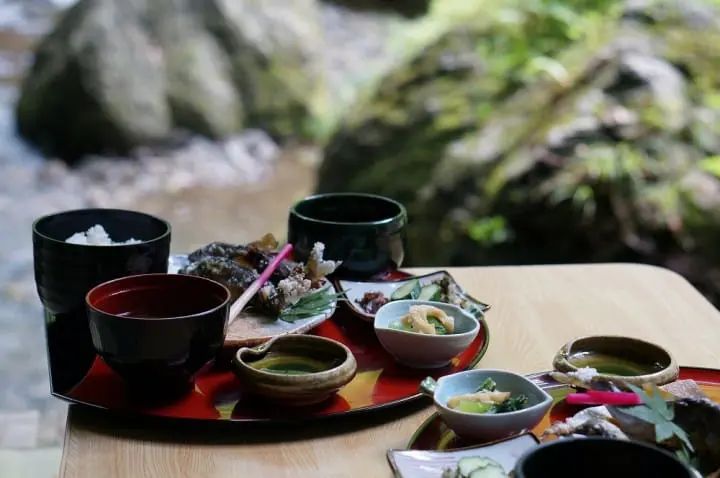
Synonymous with Kyoto summers, eating riverside, or at a restaurant with kawadoko, is a must-try. Kawadoko is outdoor seating, in which diners have their meals (often Japanese-style, sitting on a cushion) while enjoying cool river mist and breeze. Restaurants usually start kawadoko in May, and end in service in September.
Many Japanese restaurants located by the Kamogawa River, near Kawaramachi Station, offer kawadoko. Setsugetsuka is a restaurant with kaiseki Kyoto cuisine options and English support.
Eateries along the Kibune River, which flows past the famous Kifune Shrine, is also known for its kawadoko dining. One recommended restaurant is Kibune Katsura. Another is Kibunesou.
FAQ
What is the summer temperature in Japan?
During the summer months in Japan, temperatures can vary across the country. In major cities like Tokyo, Osaka, and Kyoto, average temperatures typically range from 25°C to 35°C (77°F to 95°F), with high humidity levels making it feel hotter and more uncomfortable. Northern regions, including Hokkaido, see cooler summers with temperatures around 20°C to 25°C (68°F to 77°F). In tropical destinations like Okinawa, temperatures can reach averages of 28°C to 32°C (82°F to 90°F). While these are typical summer averages, heatwaves and sudden temperature spikes can lead to hotter conditions during the summer months in Japan.
Is summer in Japan humid?
Yes, summer in Japan is known for being humid, particularly in the months of July and August. The combination of high temperatures and humidity levels can make summer in Japan feel very sticky and uncomfortable, especially in urban areas. The humidity often results from Japan's geographic location, surrounded by seas and oceans, which contribute to the moisture in the air. This humid weather can be challenging for some people, particularly those not accustomed to such conditions. Visitors to Japan during the summer months should be prepared for the heat and humidity by staying hydrated, seeking shade when possible, and wearing light, breathable clothing.
What are Japan's famous summer festivals?
Japan's summer festivals, known as "matsuri," are celebrated across the country with colorful and lively events that showcase the vibrant cultural heritage of Japan. Some of the most famous festivals include the Gion Matsuri in Kyoto, a month-long celebration featuring traditional floats and processions, and the Tenjin Matsuri in Osaka, known for its dynamic boat procession on the Okawa River. The Awa Odori in Tokushima dazzles spectators with large dance parades in August, while the Nebuta Matsuri in Aomori impresses with illuminated floats and grand displays of traditional art in the form of mythical figures. The Sumida River Fireworks Festival in Tokyo adds a touch of magic to summer nights with dazzling fireworks displays along the Sumida River, creating an unforgettable experience for locals and visitors alike. These festivals highlight Japan's rich cultural tapestry and provide a captivating glimpse into the country's festive spirit during the summer months.
Which part of Japan to visit during summer?
For a refreshing and diverse summer experience in Japan, consider visiting regions like Hokkaido, known for its cooler temperatures and outdoor activities, making it a great escape from the summer heat. Tohoku, including Aomori and Akita, offers pleasant climates and lively festivals like the Nebuta Matsuri. Northern Honshu's coastal areas in Niigata and Yamagata provide beautiful landscapes and fresh fruits, while the mountainous Japanese Alps in central Honshu, like Nagano and Gifu, offer cooler weather and opportunities for hiking amid scenic views. Coastal destinations such as Kanagawa's Kamakura and Enoshima or the Izu Peninsula in Shizuoka provide beach relaxation and water sports, catering to those seeking seaside escapes and coastal charm during Japan's summer season.
Is it worth visiting Japan in the summer?
Visiting Japan in the summer offers a mix of pros and cons to consider. While the season brings high temperatures and humidity, it also presents a vibrant tapestry of cultural festivals like Gion Matsuri and Nebuta Matsuri, providing unique insights into Japanese traditions. Seek cooler retreats in mountainous areas like the Japanese Alps or Hokkaido, or embrace beach getaways in coastal regions such as Okinawa or the Izu Peninsula for seaside relaxation and water sports. Indulge in seasonal delights like summer fruits and shaved ice treats, experiencing the diverse culinary scene the season brings. While the weather can be intense, planning your trip around your interests, whether it's exploring cultural festivals, seeking cooler climates in nature, or enjoying beach activities, can make a summer visit to Japan a memorable and enriching experience.
Where can I go in Japan for cooler summer?
For a cooler summer experience in Japan, consider visiting destinations known for their milder climates and refreshing atmospheres. Hokkaido, Japan's northern island, offers respite from the heat with cities like Sapporo providing cooler temperatures for outdoor adventures. Exploring the Tohoku region brings breezy conditions in areas such as Aomori and Akita, ideal for hiking and cultural exploration. Head to the Japanese Alps, including Nagano and Toyama, for refreshing mountain air and stunning landscapes perfect for hiking and enjoying nature. UNESCO-listed villages like Shirakawa-go and Gokayama in Gifu Prefecture offer a cooler escape with traditional charm amidst mountainous settings. Karuizawa in Nagano Prefecture, a renowned resort town, beckons with lush forests and outdoor activities, providing a relaxing retreat from the summer heat. These destinations promise cooler summer climates and diverse experiences, making them ideal choices for a refreshing summer getaway in Japan.
Where to escape summer heat in Japan?
To escape the summer heat in Japan, consider visiting regions renowned for cooler temperatures and tranquil environments. Hokkaido, Japan's northern island, offers a refreshing retreat with cities like Sapporo providing cool summer climates for outdoor pursuits. The Japanese Alps in places like Nagano and Toyama offer lush mountain landscapes and pleasant temperatures perfect for hiking and enjoying nature. Head to the Tohoku region, including Aomori and Akita, for cooler summer escapes amidst serene surroundings. Coastal getaways like Kanazawa and the Izu Peninsula offer sea breezes and beach relaxation, providing relief from the heat. Embrace mountain resort towns such as Karuizawa and Hakone for cool mountain air, hot spring retreats, and peaceful settings, enabling a revitalizing reprieve from the summer heat in Japan.
Where should I go in Japan in July?
In July, Japan offers diverse destinations to explore. Hokkaido provides relief from summer heat with its cooler temperatures, featuring attractions like Sapporo's beer festival and the lavender fields of Furano. Tokyo bustles with indoor activities and vibrant festivals, such as the Sumida River Fireworks Festival. Kyoto beckons with its historic temples and the renowned Gion Matsuri festival. Okinawa offers a tropical beach escape with snorkeling and a unique Ryukyu culture. For a cooler retreat, consider Nagano, known for its mountains, hot spring resorts, and cultural sites like Matsumoto Castle. Remember to dress appropriately for the heat and stay hydrated during your July travels in Japan.
Enjoy a Lively Japanese Summer and Keep Cool
If your travel coincides with summer in Japan, there are plenty of season-specific adventures to enjoy that don't involve overheating in the sunshine.
From gorgeous hikes to internationally-renowned festivals and light summer snacks, this season is full of activity and excitement that all can enjoy. See Japan during one of the best times of the year and stay cool.
Read also
Main image courtesy of Pixta
An awkward Southern California native living in Osaka. Originally came to Japan on the JET Program in Hyogo Prefecture (Kansai) after studying economics in college, and decided to try to stay.
IUC 10-month program graduate. Vegan and interested in all things Japan-related. Left-handed. Very fond of Kansai.












































































![[Coupon Available] Attention Overseas Winter Sports Fans! Nagano's Sports Depot Has Evolved](https://resources.matcha-jp.com/resize/720x2000/2026/01/05-254819.webp)
![[2 hours from Tokyo ] 10 Quiet and Breathtaking Views of Mount Fuji in Yamanashi Hokuto City , Yamanashi - Part 2](https://resources.matcha-jp.com/resize/720x2000/2025/12/16-253037.webp)
